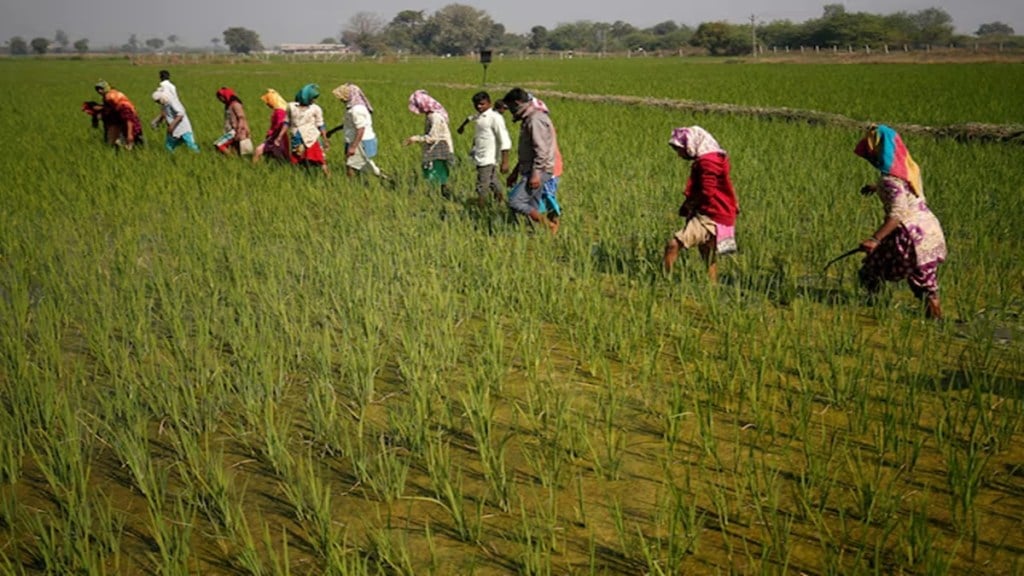To insulate farmers against the rise in global prices of soil nutrients, the Cabinet on Tuesday approved a subsidy of Rs 37,952 crore for phosphatic and potassic (P&K) fertilisers for the rabi 2025-26 season (October-March) under the nutrient-based subsidy (NBS) mechanism.
The allocation for NBS for next rabi season is higher by Rs 13,477 crore or 55% from previous rabi season (2024-25).
This means prices of non-urea soil nutrients, largely used in oilseeds, pulses and wheat, will remain unchanged for the next rabi season and farmers continue to get diammonium phosphate (DAP) at Rs 1,350/50 kg bag despite global volatility in the price.
With the increase in NBS, the fertiliser subsidy is projected to cross Rs 1.95 lakh crore (Rs 1.2 lakh crore for urea and Rs 75,168 crore for NBS) for 2025-26, marginally higher than Rs 1.91 lakh crore incurred in FY25.
The budget estimate (BE) of fertilizer subsidy for the current fiscal is Rs 1.67 lakh crore.
“The subsidy rate has been fixed, considering the import price and other factors like nutrient requirement, subsidy burden and maximum retail price”, Ashwini Vaishnaw, information and broadcasting minister said at a briefing.
Special package provided to ensure the availability of DAP and Triple Super phosphate (TSP) to the farmers without any increased retail prices, Vaishnaw said.
The subsidy for phosphorus (P) has been hiked to Rs 47.96/kg, an increase of 10% from kharif season while increase in amount is 56% more than previous rabi season. Similarly, the subsidy for sulphur was raised to Rs 2.87/kg in the next rabi season, 63% more than previous rabi season.
The subsidy rates for nitrogen and potash remain unchanged at Rs 43.02/kg and Rs 2.38/kg, respectively.
“This step will guarantee farmers access to fertilizers at affordable, subsidised prices while rationalising subsidy rates in response to global fertilizers prices trend,” Jagat Prakash Nadda, fertilizer minister said in a statement.
Given fluctuations in international prices of key fertiliser inputs like urea, DAP, Muriate of Potash (MOP), and sulphur, the government has factored in recent trends to ensure price rationalization.
India imports about 16 MT to 18 MT of fertilizers annually against consumption of over 60 MT
In FY25, against the sales of 38 MT of urea, the domestic production was around 30.6 MT and imports were 5.7 MT leading to supply disruption.
India had to depend on imports for about 60% of its annual 10 – 11 MT of DAP consumption. In addition, domestic manufacturing of DAP also depends on key raw materials ‘rock phosphate’ mostly imported from Senegal, Jordan, South Africa and Morocco.
While for potash, the country is entirely dependent on imports about 2 MT annually from Russia, Israel, Belarus and Jordan.
Retail prices of phosphatic and potassic (P&K) fertilisers, including DAP were ‘decontrolled’ in 2010 with the introduction of a ‘fixed-subsidy’ regime as part of NBS mechanism.
Since March, 2018, the retail urea price has remained unchanged. The scheme allows retail prices of the key soil nutrient to farmers to be kept at 242 per bag of 45 kg, even as the current cost of production is over Rs 2,600/bag.
Subsidies are paid directly to fertilizer companies, enabling them to sell fertilisers to farmers at affordable prices using point-of-sale machines.

